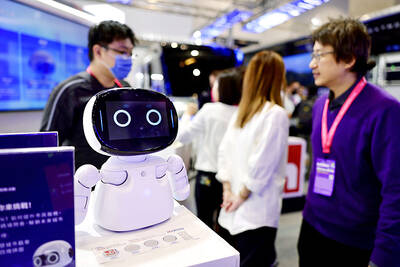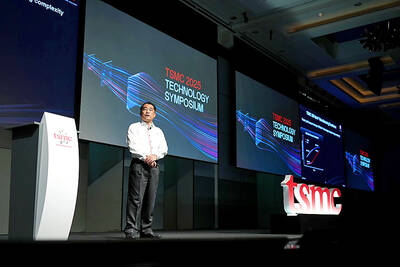I think of many things when I think of Proton, Malaysia's national car manufacturer. Shifts in global economic trends, business, or diplomacy are not, I confess, among them. But now I have to wonder.
You may not have even noticed the news. Kim Yong-nam, president of North Korea's Supreme People's Assembly and for many years Pyongyang's official shaker of foreign hands, toured the Proton production plant in Shah Alam, a provincial city south of Kuala Lumpur, and talked about the prospects for a joint venture manufacturing facility up where he lives.
With a retinue of 30 North Korean officials tailing him, Kim also visited Thailand, where he negotiated barter deals with Prime Minister Thaksin Shinawatra. Then it was on to Britain and various continental capitals.
Small beer, surely. Kim's Malaysian tour can't account for the extraordinary rise of late in the share price of Perusahaan Otomobil Nasional, as Proton is officially known. That must be attributed to favorable currency movements, a rosy earnings outlook, and talk of a foreign equity stake -- no, not North Korean. The stock closed Friday in Kuala Lumpur at 11 ringgit, unchanged on the day and up 42 percent this year.
"Building a car in North Korea -- they've been dreaming of that for a long time," says Bradley Martin, a correspondent colleague for many years and a North Korea specialist now at Dartmouth College. "But you put a car plant where people can buy cars, and there's no way North Koreans can buy cars in any number."
Fair enough, as things stand. Such initiatives as these have come to nothing before -- nothing except a US$12 billion foreign debt for Pyongyang.
But things change. Follow the recent travels of North Korean leader Kim Jong-il -- remember his visit to the Buick plant in Shanghai last year? -- and it seems evident that reforms of some kind, and at some point, are on his mind.
Malaysian officials are keen on the idea of a Proton plant in North Korea. In Thailand, a deal to exchange rice for North Korean minerals and machinery seems to be moving through the bureaucracies on both sides.
We will have to wait and see about all this, as Martin urges.
All the same, I see a larger dynamic at work here, and it has to do with the context of these contacts. It is a little more than a month since the Bush administration put North Korea on its "axis of evil" list. In a dramatic reversal of past policy, Bush is now preparing to confront North Korea over its refusal to let American inspectors see its nuclear facilities.
This tells us something -- and asks us something, too.
However strenuously Americans may now try to redefine the planet in with-us-or-with-them terms, regional cooperation and integration on the economic level is the more powerful impulse.
This is true whether or not a Proton ever rolls by a statue of Kim Il-sung on that eerie-looking main drag in Pyongyang.
Asian solutions to Asian problems. I approve, even as I wonder what they may be thinking at General Motors Corp -- which makes no secret of its interest in Korean consumers -- as to the peculiar nexus of politics and investment one finds in Asia.
The question Proton implicitly poses is this: What is the wise course with the North Koreans? On the one hand there is the "sunshine policy" of South Korean President Kim Dae-jung -- the use of commercial and diplomatic engagement to draw North Korea out of its isolation. Americans are no strangers to this strategy -- when it suits them.
On the other hand, there is the Cold War-ish standoff the Bush administration has doggedly reconstructed since coming to power just over a year ago.
I know where I stand along this line of inquiry, and I don't feel particularly lonely. I'd rather see a Proton plant in North Korea than some American spook pretending to be an impartial inspector. The one may be impractical at present, but the other will be unproductive -- perhaps purposefully.
The Europeans have now told the North Koreans to start reforming their economy and shape up on the human-rights side if they want more aid. This is just the kind of leverage that's needed, but let's not forget what makes it possible: Less than a year ago the EU took the sensible decision to recognize North Korea -- pointedly, I thought at the time, in the face of Washington's revived hostility.
It has been a long and winding road for Proton, I must say. I recall visiting the Shah Alam plant just before it opened in the late 1980s. The notion of a Malaysian car looked like a hopeless folly at the time. The first Proton Saga came off the line with a subsidy of 20 percent or more, by most analysts' reckoning. Capacity utilization was dismal, and export markets were an embarrassing fantasy.
Now Proton is making a credible bid to become a regional player in the economy end of the market -- and may climb upscale in due course. In January it bought a 49 percent interest in Gold Star Heavy Industry, a Chinese parts maker, which will reduce its dependence upon expensive components shipped from Japan by Mitsubishi Motors Corp, the original source of Proton's technology and a 16 percent partner in the company.
After years of debt and losses, Proton's reserves are healthy, and net earnings, at 300 million ringgit (US$79 million) for the year that ended last March 31, are forecast to rise substantially in 2002. A sizable export market will open up with the creation of a free-trade zone in Southeast Asia -- as will competition at home, it must be added.
A regional player -- I never would have imagined it. Now this may become true in more ways than one. Life is long, one must conclude, and distant horizons eventually draw near. I can't imagine a Proton car plant in North Korea, but that doesn't seem to be the measure of anything.

DEMOGRAPHICS: Robotics is the most promising answer to looming labor woes, the long-term care system and national contingency response, an official said Taiwan is to launch a five-year plan to boost the robotics industry in a bid to address labor shortages stemming from a declining and aging population, the Executive Yuan said yesterday. The government approved the initiative, dubbed the Smart Robotics Industry Promotion Plan, via executive order, senior officials told a post-Cabinet meeting news conference in Taipei. Taiwan’s population decline would strain the economy and the nation’s ability to care for vulnerable and elderly people, said Peter Hong (洪樂文), who heads the National Science and Technology Council’s (NSTC) Department of Engineering and Technologies. Projections show that the proportion of Taiwanese 65 or older would

Nvidia Corp yesterday unveiled its new high-speed interconnect technology, NVLink Fusion, with Taiwanese application-specific IC (ASIC) designers Alchip Technologies Ltd (世芯) and MediaTek Inc (聯發科) among the first to adopt the technology to help build semi-custom artificial intelligence (AI) infrastructure for hyperscalers. Nvidia has opened its technology to outside users, as hyperscalers and cloud service providers are building their own cost-effective AI chips, or accelerators, used in AI servers by leveraging ASIC firms’ designing capabilities to reduce their dependence on Nvidia. Previously, NVLink technology was only available for Nvidia’s own AI platform. “NVLink Fusion opens Nvidia’s AI platform and rich ecosystem for

Taiwan Semiconductor Manufacturing Co (TSMC, 台積電) yesterday said it is building nine new advanced wafer manufacturing and packaging factories this year, accelerating its expansion amid strong demand for high-performance computing (HPC) and artificial intelligence (AI) applications. The chipmaker built on average five factories per year from 2021 to last year and three from 2017 to 2020, TSMC vice president of advanced technology and mask engineering T.S. Chang (張宗生) said at the company’s annual technology symposium in Hsinchu City. “We are quickening our pace even faster in 2025. We plan to build nine new factories, including eight wafer fabrication plants and one advanced

‘WORLD’S LOSS’: Taiwan’s exclusion robs the world of the benefits it could get from one of the foremost practitioners of disease prevention and public health, Minister Chiu said Taiwan should be allowed to join the World Health Assembly (WHA) as an irreplaceable contributor to global health and disease prevention efforts, Minister of Foreign Affairs Lin Chia-lung (林佳龍) said yesterday. He made the comment at a news conference in Taipei, hours before a Taiwanese delegation was to depart for Geneva, Switzerland, seeking to meet with foreign representatives for a bilateral meeting on the sidelines of the WHA, the WHO’s annual decisionmaking meeting, which would be held from Monday next week to May 27. As of yesterday, Taiwan had yet to receive an invitation. Taiwan has much to offer to the international community’s